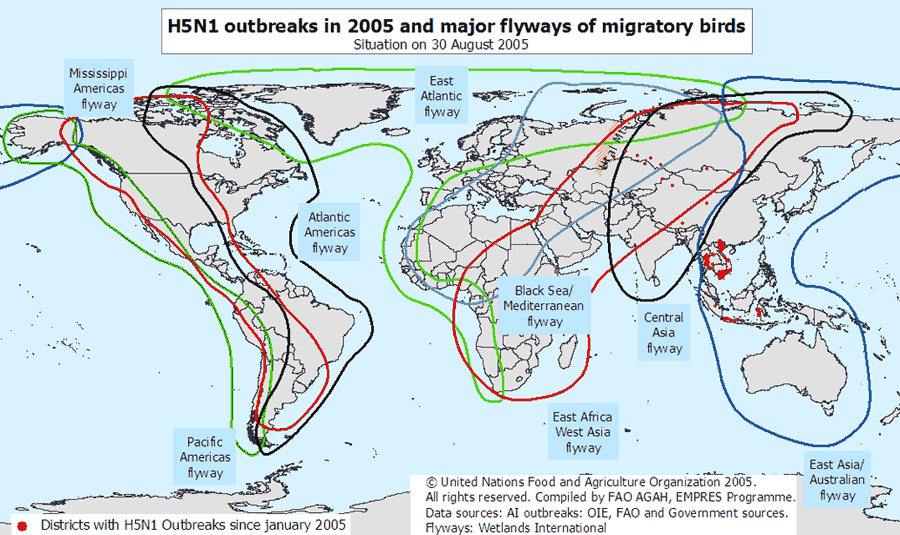Tuesday, June 21, 2011
MIGRATION OF BIRDS
The moevment of the birds over the large distance in response to weather, change in food or habitat is migration. Approximately 1800 of the world's 10,000 birds species tend to migrate over long distance. Those who do not migrate are called residents or sedentary.
PATTERN:
Seasonal migration:
Usaually birds migrate along the flyway, commonly towards north in the spring to breed in the temperate summer and then returning then to the south in the autumn to prevent themselves from the extreme summer. But when the days of the autumn reduce in length, they fly back to the warmer regions. Where the food supply varies a little with the season.
Leap-Frog Migration:
The birds may partially migrate too. Some species partially migrate from high to low latitudes in winter. Such as, 44% non-paserine and 32% paserine in Australia. The migration from high to low altitude is an example of leap-frog migration.
Chain Migration:
Some birds show migration in which they travel from north to south but do not reverse.
Gender Difference:
The migration pattern may be on sex basis. For example, female Chaffincnes migrate while males are residents.
Fly Way Pattern:
Usually the pattern is fly way with one bird leading. The route is usually followed with the help of mountains , coast lines and rivers. The direction of the wind, however is more helpful when there are giant oceans and vast seas.
Birds usually follow one route to proceed and the other one to return. In North America the birds follow clock wise migration pattern, in which birds going to North shift to West and those flying South tend to shift Eastwards.
Flocks:
Not most, but many birds fly in groups called flocks, which reduces energy cost for large birds. Such as Geese flying in flock save 12-20% energy, they utilize flying alone. On average, the birds fly in range of 150-600 meter (500-2000feet) altitude during migration. But skeletons of Pintail and Black species of a bird have been found at 5000 meter (16,400 feet) on Khumbu Glaciers (Mount Everest) and Bar headed Geese have been seen flying above 8000 meter (29000 feet) in Himalayas.
Flightless Birds Migration:
From large cranes, birds of prey to little humming bird, almost every kind of birds migrate. Even flightless birds migrate. Emus move from breeding site to rainy site in dry weather. Penguins migrate to oceans. Auk babies migrate by swimming until they can fly. Sea guls during non-breeding time moves in whole ocean for seasonal food abundance.
Longest Migration:
In summer it breeds in Arctic North and then move to South for spending winter on Antartic ice pack. The shortest distance between two poles is 15000 km. But birds usually travel circuitous routes taking 30,000 to 40,000 km round trip.
ORIENTATION AND NAVIGATION:
Birds use their senses for nevigation. Most of them use sun as compass. The navigation may also be based on abilities, such as ability to detect magnetic field, use visual land marks or olfactory cues.The older individuals even use correlation of wind drift.
Migratory birds use two forms electromagnetic tools to find and reach their destination, one is innate and while other is due to experience. When the birds are young they migrate correct by following the direction of Earth's magnetic field but they are unwared about how far their destination is. This happens by radical pair mechanism due to chamical reaction in photo pigments sensation to long wave length. It is as simples as a boyscout with a compass but no map, but with age the birds gain experinece and they can landmark and do mapping by magnetities in trigeminal system, which indicates about strength of magnitude at different latitudes while going from North to South and let the bird reach the destination.
Research has shown that there is a neural connection between eyes and cluster N (a part of forebrain) which stays activated during migration orientation which helps birds to actually see the magnetic field of Earth.
A study at Max Plank Institute for Ornithology and Radolfzell and their collegues at university of Priceton, Pisa and Copenhagen have found that birds use odour (smell cues) as nevigation and they are more important than sun and electro magnetic field.
Refrences: www. Wikipedia.com
www.naturia.per.sg
www.sciencedaily.com
Subscribe to:
Post Comments (Atom)


No comments:
Post a Comment